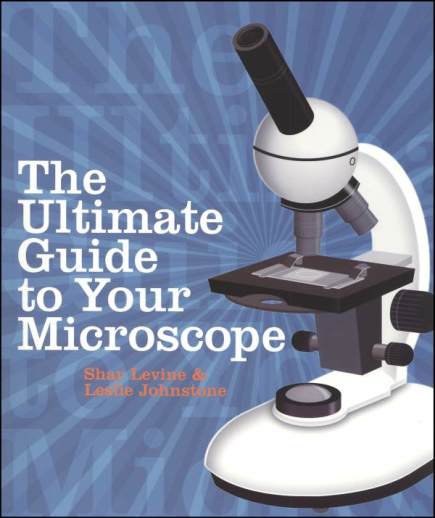We use cookies to make your experience better. To comply with the new e-Privacy directive, we need to ask for your consent to set the cookies. Learn more.
Ultimate Guide to Your Microscope
This is one of the best and most complete microscope books I've ever seen. It is 143 pages of helpful information for any student who is just beginning to work with microscopes. The recommendation by the author is that students read the opening chapters of this book to be able to name the parts of a microscope, focusing, and sample preparation. Chapter one gives the safety guidelines for working with microscopes and the equipment list needed for doing the activities in this book. Chapter two explains light sources, lenses, identifying your microscope, parts of a microscope, and trouble shooting. Chapter three tells about the different types of slides and how to prepare them wet mounts, smear slide, well slide, squash slides, staining a specimen, acetate peel, and permanent mounts. These are the chapters which lay the foundation for the rest of the book.
Chapters 4-10 offer experiments to practice the skills taught in the first 3 chapters. Students can make their own microtome (instrument used to make thin samples for slides), view finger prints, fibers, crystals, sweat, hair, bug parts, pond water, food, and plant specimens which they will mount themselves. The book includes photomicrographs, pictures through a microscope, so students can compare their slides. Many of the things used in these experiments are from your own home, but additional equipment needed includes: microscope, blank slides, cover slips, tweezers, eye dropper, lens paper, clear plastic ruler, razor knife, nail polish, and scissors. This book would make a very good one semester course for an introduction to microscopes, or you can add it to your curriculum. Either way, microscopes are expensive pieces of equipment and students need to know how to use them correctly. The guidance and information you need are in this book. - Donna
| Product Format: | Softcover Book |
|---|---|
| Brand: | Sterling Publishing Company |
| Grades: | 5-AD |
| ISBN: | 9781402743290 |
| Length in Inches: | 10.125 |
| Width in Inches: | 8.5625 |
| Height in Inches: | 0.5 |
| Weight in Pounds: | 1.1 |

